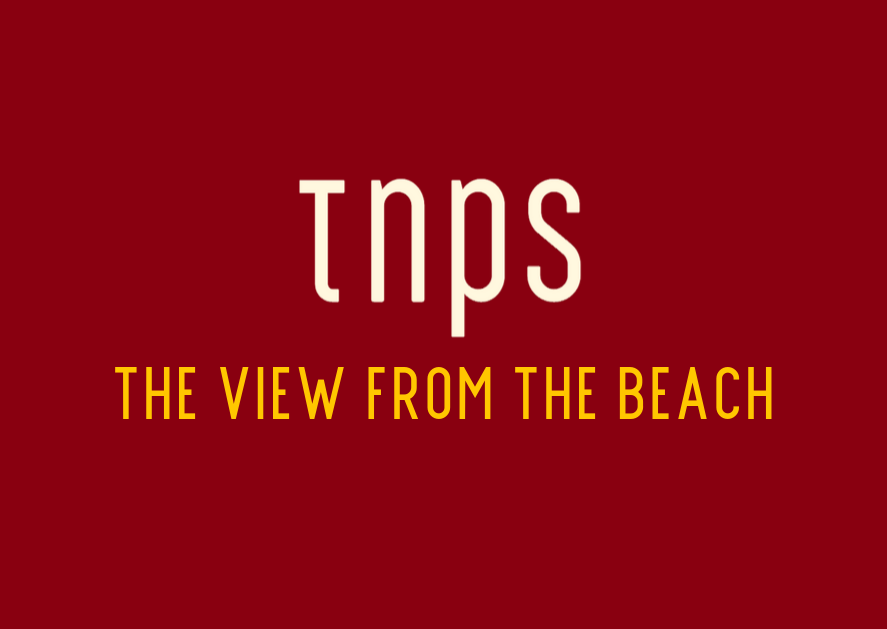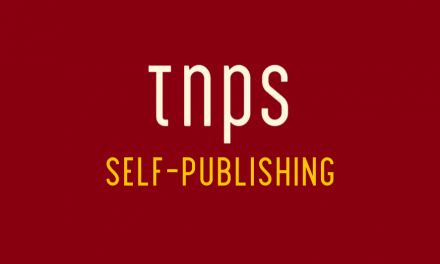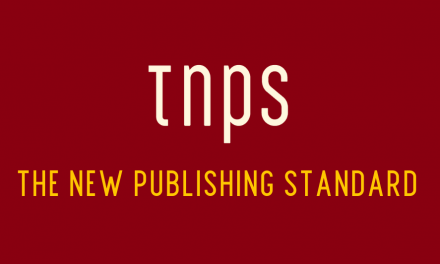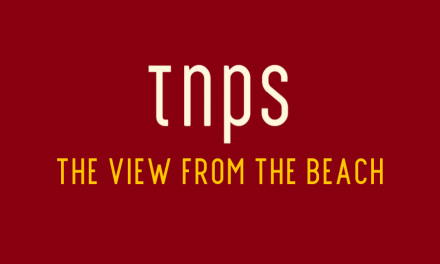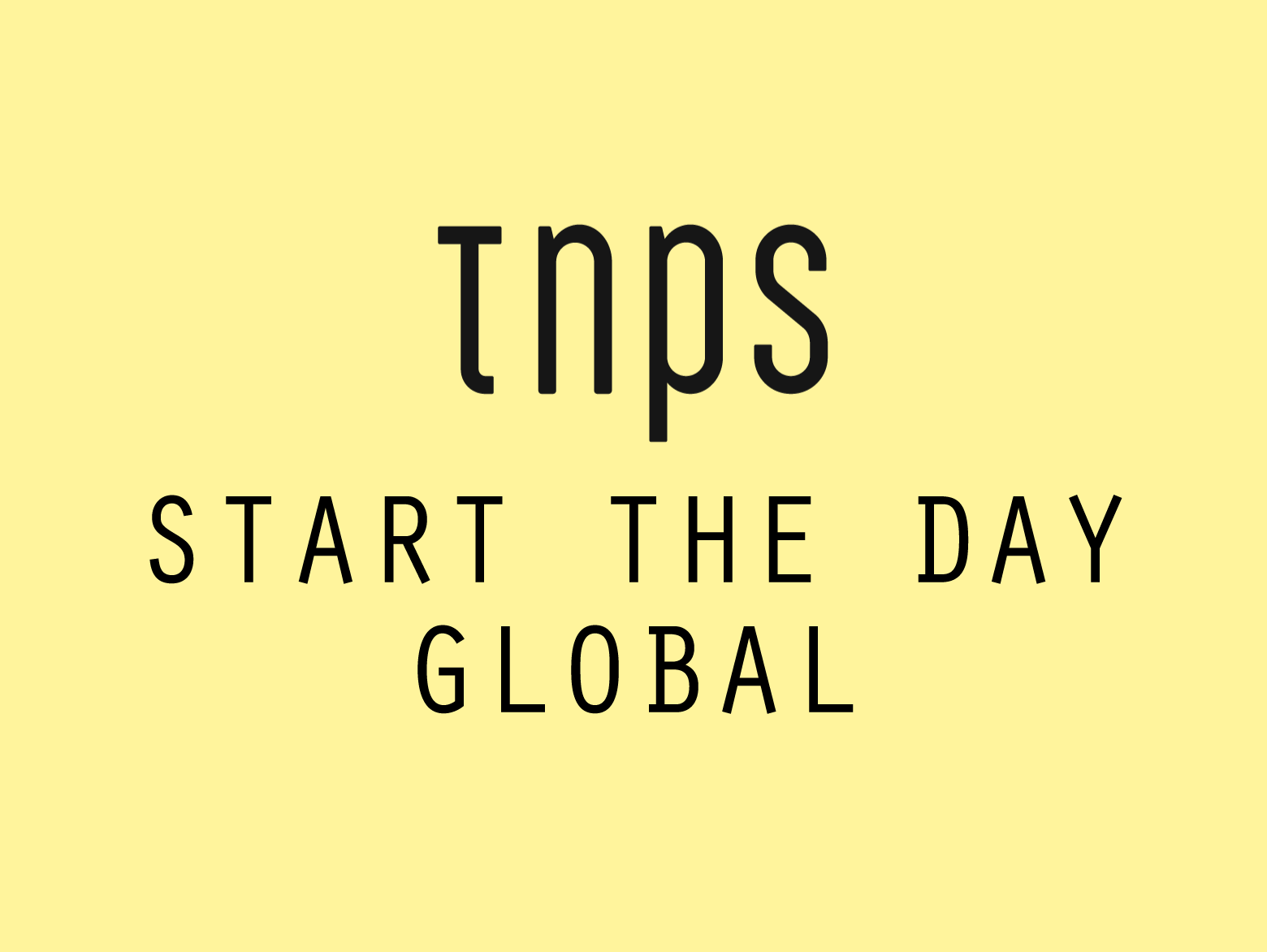Imagine if the American Booksellers Association were to ask ChatGPT to write its guidelines? No need to imagine. It happened!
Over a week ago, Kurt Schlosser ran a post on GeekWire that almost made it as a short item here on TNPS LinkedIn. A small US independent bookstore, Swoon City, was using AI to boost business.
But every time I sat down to work up a summary, more questions jumped out. Partly about what this might mean for the publishing industry’s future.
But also, a feeling of déjà vu. AI-assisted bricks & mortar stores? That sounded familiar somehow. Here’s why.
The American Booksellers Association was offering AI guidance to its book retailer members way back in May 2023. Guidance that was remarkably far-sighted in its vision, but way too soon, this being barely six months after ChatGPT launched, with all AI’s then limitations.
“The impact of this technology on independent retailers is going to be comparable to the introduction of online commerce in the 90s, but, assisted by the internet and social media, it’s going to propagate much more rapidly” – American Booksellers Association.
Said the ABA at the time: “The impact of this technology on independent retailers is going to be comparable to the introduction of online commerce in the 90s, but, assisted by the internet and social media, it’s going to propagate much more rapidly.“
Hard to believe, right? Yet by August 2023, the ABA was fairly motoring along the AI freeway and, with callous indifference to the sensibilities of the Luddite Fringe, used ChatGPT to write some guidelines for indie retailers to use AI to boost their business. No seriously, I am not making this up.

The Lost Summer of AI Pragmatism
Let me run that by you again. Between May and August 2023, the American Booksellers Association use ChatGPT to provide guidance encouraging member stores to explore artificial intelligence tools. Fact!
This brief window of pragmatic exploration closed abruptly. Just one month after the ABA’s ChatGPT-authored guidance appeared, the Authors Guild and seventeen prominent authors, including George R.R. Martin, John Grisham, and Jodi Picoult, filed their landmark class-action lawsuit against OpenAI on September 20, 2023, for copyright infringement. Authors Guild CEO Mary Rasenberger characterised it as “identity theft on a grand scale,” setting the tone for the UK Publishers Association’s Dan Conway to later scream about “The Great Copyright Heist!”(While simultaneously advising members how best to use AI, of course.)
The timing reveals publishing’s fundamental confusion about AI.
The timing reveals publishing’s fundamental confusion about AI. The ABA was cheerfully using ChatGPT to write policy guidance in August while author lawsuits were already underway – Paul Tremblay and Mona Awad had filed against OpenAI in California in June 2023, followed by additional suits from Sarah Silverman and others throughout the summer. When the September filing made headlines, thanks to the big-name authors on the ticket, the ABA finally got the message, and its tentative AI pragmatism evaporated.
The ABA’s subsequent lip-service acknowledgement of AI’s operational benefits speaks volumes. By 2025, CEO Allison Hill’s public stance became purely defensive: “We don’t want to be selling books created by AI. It’s not what our customers want from us. We need transparency.”
In fairness, the ABA was totally transparent when it served up AI-generated guidance to its customers.
Yet the distinction between operational tools and generative content – so clear in the ABA’s initial guidance in 2023 and in Swoon City’s practice today, as we’ll see below – was quietly put on the back-burner as the Luddite trolls sharpened their knives.
Hardly surprising given the ABA’ experience in 2021, when Hill was forced to apologise after sending our racist and ant-trans material to its customer base. Once bitten, twice shy.
Yet using AI to analyse library borrowing data (Swoon City’s approach) has nothing directly to do with using copyrighted books to train models without permission (the lawsuit’s focus) or selling AI-generated content (the bookseller concern).
Publishing collectively conflated three entirely separate issues and treated anyone suggesting AI might offer operational advantages as heretical, inviting the Luddite Fringe to feast on self-righteous indignation.
These lawsuits address legitimate copyright concerns (not to be confused with innocence or guilt – that’s for the court to decide) about training data – concerns entirely separate from whether bookstores should use AI for inventory management, metadata enrichment, or loyalty programmes.
Yet publishing’s collective anxiety, fed by the Flat Earthers determined to drag the industry back to the twentieth century, has made such distinctions all but impossible. The industry that might have led AI adoption for operational efficiency instead retreated into categorical opposition, leaving ventures like Swoon City as isolated anomalies rather than models for replication.
The tragedy is that this window briefly existed and then was shuttered out of fear. For three months in 2023, the ABA recognised AI’s potential to help independent bookstores compete. Then fear replaced curiosity, and opportunity closed. Swoon City succeeded precisely because it operated outside this ecosystem of institutional anxiety, implementing tools the ABA had briefly endorsed but subsequently abandoned.
At which point, having mentioned Swoon City so many times, let’s look at what Swoon City is.
A Blueprint Without Builders
When Swoon City opened in Seattle’s Ballard neighborhood (USA), per Schlosser at GeekWire, co-founders Marissa Coughlin and Constantine Vetoshev demonstrated something publishing had declared impossible: artificial intelligence strengthening rather than threatening the physical bookstore. Their dedicated romance bookstore leveraged AI to analyse Seattle Public Library borrowing data, curating 3,000 titles based on proven local appetite.
When building their loyalty program, Vetoshev consulted Anthropic’s Claude and emerged with a bespoke solution in hours rather than months.
They deployed generative AI to enrich metadata, transforming simple categorisations into precise taxonomies – “LGBTQ, enemies-to-lovers, vampire romance, romantic comedy, urban fantasy.” When building their loyalty program, Vetoshev consulted Anthropic’s Claude and emerged with a bespoke solution in hours rather than months.
Yet a survey of the international bookstore landscape reveals that Swoon City stands virtually alone, even in the USA, let alone globally.
Despite romance print sales doubling to 51 million units annually, despite growing literacy rates in Asia and Africa creating new markets, and despite the obvious applicability of their model to other genre-dedicated book retailers, it would appear (I’d be happy to be proved wrong if anyone knows otherwise) no cases exist of similar AI adoption by a bricks & mortar store.
The Genre-Specific Dividend
Romance succeeded as Swoon City’s testing ground because the genre demands precise taxonomic navigation. Readers don’t simply want “romance” – they want closed-door contemporary with neurodivergent protagonists, or paranormal enemies-to-lovers with found family themes. Try finding a BISAC code for that! This specificity is what makes AI classification valuable rather than reductive.
Other genres present equally compelling, yet entirely unexplored, opportunities, for genre-specific stores, or to more efficiently manage traditional multi-genre stores. A few examples:
Mystery and crime fiction operates within intricate subgenre distinctions that confound casual browsers. Cozy mysteries share shelf space with hardboiled noir, police procedurals nestle beside locked-room puzzles, and psychological thrillers blur boundaries with domestic suspense.
AI could map these territories with precision, but it could also solve mysteries’ unique operational challenge: series reading order. Readers discovering Louise Penny’s Inspector Gamache novels at book fourteen need guidance back to Still Life, not algorithmic recommendations for similar standalone thrillers. AI tools could track every series, map spoiler risks, and guide readers through complex multi-author universes like Rebus or Bosch without requiring staff to maintain encyclopedic knowledge.
Science fiction stores face different challenges. The genre divides along aesthetic and philosophical lines – hard SF versus space opera versus cyberpunk – that resist simple categorisation. AI trained on prose style and thematic content could connect readers to books based on whether they prefer Clarke’s technical rigour or Le Guin’s anthropological speculation, Asimov’s systematic worldbuilding or Gibson’s linguistic innovation. Hugo and Nebula prize tracking becomes predictive rather than reactive. Most valuably, AI could trace influence genealogies, connecting foundation texts to their modern inheritors: readers who loved Children of Time might never discover Tchaikovsky’s debt to Clarke and Asimov without algorithmic archaeology.
Literary fiction presents the paradox of a category defined by what it isn’t. AI analysing sentence structure, narrative technique, and prose rhythm could match readers to authors based on style rather than plot – connecting Annie Ernaux readers to Rachel Cusk not because their stories resemble each other but because their approaches to autofiction overlap. Prize shortlist analysis could identify patterns in judging preferences, helping stores stock smarter during awards seasons.
Most controversially, AI could map literary fiction’s unacknowledged genre borrowing, revealing how the “serious” novel constantly raids mystery, science fiction, and romance for narrative structures.
Well, I did say “controversially”, and I know the heretical suggestion that literary fiction has been known to borrow from genre fiction will have more hate mail heading my way than my thoughts on AI, but sometimes we need to take the publishing blinkers off about literary fiction’s self-mythology. Let me give you some perfect examples:
Margaret Atwood – The Genre Chameleon
The Handmaid’s Tale and Oryx and Crake are pure science fiction – dystopian futures, speculative technology, altered societies. But Atwood famously resisted the “sci-fi” label for years, insisting she wrote “speculative fiction” because it could “really happen.” The SF community found this hilarious and somewhat insulting, as if “real” science fiction wasn’t concerned with plausible futures. Isaac Asimov’s I Robot? Arthur C. Clarke’s HAL 2000 talking computer in 2001: A Space Odyssey? Totally implausible, of course. But back to Atwood.
AI analysing narrative structure would classify these Atwood novels alongside Ursula K. Le Guin and Octavia Butler – but because Atwood won the Booker Prize, they’re shelved in “literary fiction” and taught in university courses as “serious literature” rather than lowly genre work.
Kazuo Ishiguro – Mystery as Literary Device
Never Let Me Go is science fiction (clones raised for organ harvesting), but structured like a mystery – the narrator slowly reveals information the reader suspects but doesn’t know for certain.
The Remains of the Day uses classic mystery novel techniques: unreliable narrator, slowly revealed past secrets, the reader piecing together what really happened between Stevens and Miss Kenton while Stevens himself can’t or won’t acknowledge it. This is Agatha Christie’s narrative architecture dressed in literary prose.
AI could map how Ishiguro borrows mystery’s controlled information release – the core pleasure of detective fiction – while writing “serious” novels about memory and regret.
Toni Morrison – Gothic Horror
Beloved is a ghost story. Literally. A murdered child returns to haunt her mother. The novel uses Gothic horror conventions – supernatural manifestation, traumatic past, atmospheric dread, the house as site of terror (124 Bluestone Road).
Morrison elevates these genre elements to explore slavery’s intergenerational trauma, but the structure is pure horror fiction. AI analysing narrative patterns would connect Beloved to Shirley Jackson’s The Haunting of Hill House or Mexican Gothic – traumatised houses, female protagonists, past violence manifesting as present terror.
Cormac McCarthy – Post-Apocalyptic Adventure
The Road is straight-up post-apocalyptic science fiction. Unnamed catastrophe, father and son surviving in wasteland, cannibalistic raiders, desperate search for safety. This is the same narrative structure as hundreds of genre novels.
But McCarthy writes it in stripped-down, biblical prose without quotation marks, so it’s “literary fiction” and wins the Pulitzer. AI would cluster it with Station Eleven, The Dog Stars, and classic post-apocalyptic SF – revealing that McCarthy’s innovation is stylistic, not structural.
Colson Whitehead – Alternate History SF
The Underground Railroad makes the metaphorical railroad literal – actual trains running beneath the antebellum South. This is alternate history science fiction, the same subgenre as Philip K. Dick’s The Man in the High Castle.
The Nickel Boys structures itself like a prison escape thriller before revealing its devastating narrative trick (which I won’t spoil here). AI analysing plot architecture would connect it to genre thrillers while recognising how Whitehead subverts those expectations.
Donna Tartt – Mystery Procedural
The Secret History announces the murder in the first sentence, then spends 500 pages as a reverse mystery – we know who died and whodunnit, but not why or how. This is classic mystery structure inverted.
The Goldfinch is a heist novel about a stolen painting, complete with art forgery, criminal underworld, and the protagonist’s desperate attempts to return the artwork. Strip away the literary prose and Dostoevsky references, and you have a Dan Brown plot.
Jonathan Franzen – Family Saga Romance
The Corrections and Freedom use multi-generational family saga structures borrowed from genre fiction – especially romance novels’ focus on relationships, misunderstandings, and emotional reconciliation. The “serious” literary treatment disguises that these are fundamentally books about people failing to communicate their feelings, then eventually connecting – the exact arc of countless romance novels.
AI analysing emotional beats and relationship arcs would show Franzen borrowing heavily from domestic fiction and family saga romance.
The Patterns AI Would Reveal
What’s fascinating is that literary fiction’s prestige often depends on denying these borrowings. The books win prizes and critical acclaim partly by distancing themselves from genre origins:
- Atwood: “It’s not sci-fi, it’s speculative fiction”
- Ishiguro: “I’m exploring memory, not writing mysteries”
- McCarthy: “This is biblical allegory, not post-apocalyptic fiction”
But AI analysing structure, plot beats, and narrative architecture wouldn’t care about author interviews or critical reception. It would reveal:
- Beloved shares more structural DNA with Gothic horror than with realist literary fiction
- The Road follows post-apocalyptic genre conventions beat-for-beat
- The Underground Railroad is alternate history SF by any objective measure
This “unacknowledged genre borrowing” point is controversial because it challenges literary fiction’s self-image as somehow above or beyond genre constraints.
But here’s the thing: it’s also commercially valuable:
For booksellers: Readers who loved The Handmaid’s Tale might enjoy Octavia Butler, but they’ll never find that connection if Atwood is shelved separately as “literature” rather than alongside the science fiction she’s actually writing.
For publishers: Understanding these structural connections could improve marketing – why not tell Station Eleven readers about The Road? Why not connect Beloved to contemporary Gothic horror?
This kind of analysis is exactly what AI excels at: pattern recognition across large datasets that reveal connections invisible to individual readers or perhaps even expert booksellers.
(Note: Examples above reflect my limited reading – I’m sure there are countless better examples to make those same points.)
Impoverishing Education
But here’s more: The literary establishment’s snobbish genre anxiety damages more than just bookstore shelving – it impoverishes education itself. I once taught The Handmaid’s Tale with explicit instructions by the English Department Head not to reference science fiction or dystopian traditions, as if acknowledging genre context to the students would somehow contaminate the novel’s “literary merit”.
When teaching Frankenstein, I was reprimanded for explaining to a class of sixteen year olds the galvanism experiments that inspired Shelley’s creation scene. “You’re not their science teacher!”
This isn’t preservation of standards – it’s willful ignorance masquerading as sophistication. AI analysing narrative structure would reveal these genre foundations whether English department heads approve or not, potentially liberating both readers, students and teachers from arbitrary categorical restrictions.
Other Legitimate Forms of Reading
As a teacher I also faced the impossible task of getting English departments to acknowledge comics were a legitimate form of reading.
It didn’t help that younger kids’ comics were humour-based, with teachers the butt of the humour (“This rubbish is encouraging the children to disrespect us!”), while older kids were coming into school with American import superhero stuff with American spellings that would make an English Department Head turn purple with rage and reach for the cane.
No matter the beautifully crafted storylines and exquisite art that the Head of Art would pore over when he thought the English Head was not looking. “That is not how you spell colour! This is not literature! Spiderman? Superman? The Fantastic Four? No-one will remember this stuff in ten years’ time!”
As the UK comics industry took a very different path from the US (I’m guessing The Beano, Dandy, Bunty, Eagle, TV21, Topper et al will mean nothing to anyone reading this across the pond – your loss!!!) let me explore this next section with focus on the international brands.
Comics: The Transmedia Blind Spot
If any retail category should have embraced AI-powered cross-media intelligence, it’s comic book stores. These shops sit at the convergence of multiple entertainment ecosystems: print comics spawn film adaptations that inspire video games that generate renewed interest in decades-old back issues. The Marvel Cinematic Universe alone spans dozens of films, multiple streaming series, and thousands of comic issues. DC, Image, Dark Horse, and independent publishers maintain similarly complex transmedia webs. Manga flows into anime. Webtoons migrate to Netflix. Video game narratives inspire graphic novels.
This convergence creates recommendation opportunities that standard bookstores cannot match. A customer who invested five hundred hours in Elden Ring shares aesthetic and narrative preferences with readers of dark fantasy comics featuring environmental storytelling and ambiguous morality. Someone who loved The Last of Us television series might connect with post-apocalyptic comics exploring fungal body horror and chosen family dynamics – but only if the store can map those connections across media boundaries.
AI could theoretically deliver:
Transmedia recommendation engines analysing not just comics but gaming narratives, television series, and film plots simultaneously. “You loved this film? These comics explore similar themes through different formal constraints.”
Dynamic reading guides that update with each new MCU or DCEU release, automatically generating “to understand this film, read these issues” pathways without requiring staff to maintain encyclopedic franchise knowledge.
Someone who prefers Nolan’s Batman to the Arkham games version receives different recommendations than someone whose entry point was Batman: The Animated Series. The same character name obscures radically different aesthetic preferences.
Character version tracking across media iterations. Someone who prefers Nolan’s Batman to the Arkham games version receives different recommendations than someone whose entry point was Batman: The Animated Series. The same character name obscures radically different aesthetic preferences.
Convention and release intelligence predicting which back issues will spike in demand based on social media buzz, game announcements, and film release schedules. Remember the Guardians of the Galaxy effect, when obscure 1970s comics suddenly became valuable because Marvel gambled on an unknown property?
Gaming-to-comics bridges identifying print narratives for players based on game mechanics, themes, or storytelling approaches rather than superficial IP matches.
Current comic store software – platforms like League of Comic Geeks, ComicHub, and Alexandria POS – focuses on inventory management, pull lists, and subscriptions. League of Comic Geeks offers recommendation systems based on reading preferences, but nothing approaches genuine transmedia intelligence. Nyckel provides AI-powered comic series identification for inventory management, but that’s image recognition, not narrative analysis.
The opportunity gap is vast. Comics publishers – Marvel, DC, Image, manga houses – have the most to gain from transmedia AI tools because their properties already span multiple formats. Yet none have developed or licensed such systems to retailers. In an industry where film release schedules drive back issue prices, this represents a stunning failure of commercial imagination.
Emerging Markets: The Leapfrog Opportunity
Publishing’s developed markets carry the burden of established practice. European and North American bookstores operate within inherited structures: standardised POS systems, traditional staff training models, decades of “this is how we’ve always done it” thinking. Innovation requires overcoming institutional inertia.
Emerging markets face fewer constraints.
The Asia-Pacific region accounts for thirty-five percent of the global books market. The Middle East and Africa are projected to deliver four percent annual growth through 2030. In India, China, and Latin American economies, localised content in native languages drives demand. These markets show rising literacy rates and increasing appetite for affordable books. Yet bookstore infrastructure remains underdeveloped compared to mature markets.
This represents advantage rather than deficit. Emerging market bookstores can adopt AI-first approaches without dismantling legacy systems. A new bookstore in Lagos or Jakarta or São Paulo can implement Swoon City’s model from inception, using AI for initial inventory curation, metadata enrichment, and operational efficiency without needing to retrain staff accustomed to older methods or justify deviation from established practice.
The technical barriers are minimal. Cloud-based AI tools require internet connectivity, not substantial capital investment. Large language models democratise capabilities previously reserved for enterprises with specialised development teams. A bookstore owner in Mumbai can access the same AI consultation that Vetoshev used to build Swoon City’s loyalty program, obtaining bespoke solutions in hours rather than contracting expensive custom development.
Localisation presents challenges but also opportunities. AI trained on English-language library data must adapt to markets where reading preferences, genre definitions, and cultural contexts differ substantially. Yet this adaptation work could reveal insights valuable globally. A bookstore in Nairobi analysing local borrowing patterns might discover demand signals that New York publishers missed entirely, creating feedback loops that improve global publishing decisions rather than simply imposing Western models on new markets.
Publishers seeking growth in emerging markets should recognise AI tools as infrastructure investment rather than luxury features. Providing genre-specific AI toolkits to bookstores in developing markets – free or heavily subsidised – builds distribution networks and generates market intelligence simultaneously. The alternative is watching other platform retailers capture emerging market share through algorithmic recommendation systems while local bookstores struggle with manual inventory decisions and generic categorisation.
The question is whether publishers will act before opportunity closes. Once consumers in emerging markets become accustomed to AI-powered recommendations, local bookstores offering merely physical browsing become disadvantaged. The window for empowering independent retailers with competitive AI tools is open but not indefinitely.
Publisher Responsibilities and Strategic Imperatives
Swoon City succeeded partly because Vetoshev works as a software developer at an AI company. His technical literacy made AI adoption feasible. Most bookstore owners lack such advantages. If publishers want independent bookstores to survive – and they should, as indies remain vital connections to readers and crucial discovery channels for new authors – they cannot simply admire the Swoon City model and wait for spontaneous replication.
Publishers could develop and license genre-specific AI toolkits as part of bookseller relations programmes. Rather than offering only cooperative advertising funds, provide operational intelligence that helps independents compete with chains and Amazon. A “Mystery Store AI Package” could include series tracking, spoiler management, and subgenre mapping customised to crime fiction’s unique demands. A “Comics Cross-Media Intelligence” suite could map transmedia connections that no human staff could maintain manually.
Real-time regional intelligence aggregated from multiple independent stores using similar AI tools could reveal emerging preferences before they appear in national bestseller lists, informing agile reprinting and targeted campaigns. If Swoon City’s AI reveals unexpected demand for paranormal hockey romance in Seattle while a similar tool in Austin shows appetite for the same niche, publishers gain actionable market intelligence while bookstores gain competitive inventory advantages.
Returns reduction represents mutual publisher-bookstore interest. Better initial inventory matching means fewer returns, a perpetual publishing headache destroying margins and creating waste. If AI helps bookstores stock smarter, publishers’ economics improve alongside retailers’ cash flow.
The Democratisation Imperative
Swoon City’s most radical demonstration may be operational rather than commercial. When Vetoshev needed a loyalty program, he didn’t hire developers or purchase enterprise software. He consulted Anthropic’s Claude, received implementation guidance, and deployed a bespoke solution in hours. “A couple of hours with a large language model, and we’re off to the races,” he noted.
The constraint isn’t capital or technical knowledge – it’s awareness that such tools exist and confidence to use them.
This democratises capabilities previously reserved for chains with IT departments. Independent bookstores can deploy sophisticated CRM systems, dynamic inventory tools, and custom recommendation engines without enterprise-level investment or specialist expertise.
Publishers and bookseller associations should prioritise education over technology development. The tools already exist. Bookstore owners need guidance, case studies, and reassurance that AI adoption doesn’t require technical backgrounds. Workshops demonstrating how a non-technical user can implement Swoon City-style systems would generate more innovation than developing proprietary platforms that bookstores lack resources to customise.
The Swoon City model proves AI serves operational efficiency without compromising creative autonomy or customer connection. Coughlin draws firm lines: AI facilitates community-building through embroidery classes and stained-glass workshops around books, but never replaces human curation or generates content. This is augmentation, not replacement – preserving the tactile joy of browsing while stripping away operational friction that distracts from customer relationships.
The Urgency of Absent Competition
The most revealing aspect of this investigation is what wasn’t found: virtually no documented international or genre-specific bookstore AI implementations beyond Swoon City. This absence clarifies opportunity but also highlights urgency. First-mover advantages exist in retail. Once consumers experience AI-enhanced browsing at one bookstore, others seem outdated by comparison.
Comics stores’ failure to exploit transmedia opportunities is particularly striking. Every Marvel film release represents a moment when casual viewers might convert to comics readers – if stores could bridge that gap intelligently. Instead, customers search Reddit for reading recommendations or rely on Wikipedia, bypassing physical retail entirely. The ecosystem exists: films drive interest, comics provide deeper engagement, stores offer community. AI could connect these elements seamlessly. Its absence represents lost sales and missed relationships.
Mystery and science fiction stores face similar urgency. Readers overwhelmed by subgenre complexity increasingly default to online recommendations rather than browsing physical stores. Each failed browsing experience – a reader leaving empty-handed because they couldn’t navigate from their favorite TV detective to print equivalents – represents a lost customer and a lost opportunity for relationship building.
Blueprint Awaiting Construction
Swoon City has proven AI can strengthen physical bookstores without compromising their essential character. The romance bookstore thrives because AI handles operational complexity – inventory curation, metadata enrichment, loyalty programmes – freeing staff to focus on community building and customer relationships. This is intelligent augmentation preserving what makes independent bookstores valuable while eliminating friction that distracts from core mission.
Swoon City has provided the blueprint. The construction crew remains notably absent. Publishing’s bricks & mortar future may depend on whether the industry recognises that artificial intelligence doesn’t erase the analogue bookstore – it equips it to compete.
On which point, let me wind this essay up by noting that everything explored here can, and likely will, be done by big chains like Waterstones and B&N in the not too distant future.
Short term, Jimmy Daunt is likely in the same position as the American Booksellers Association, hands tied by the fear of industry backlash from the Luddite Fringe.
A rare opportunity for indie bookstores to get ahead of the big boys. First-mover advantage.
Don’t squander the opportunity. Swoon City has shown the way.
This post first appeared in the TNPS LinkedIn newsletter.

